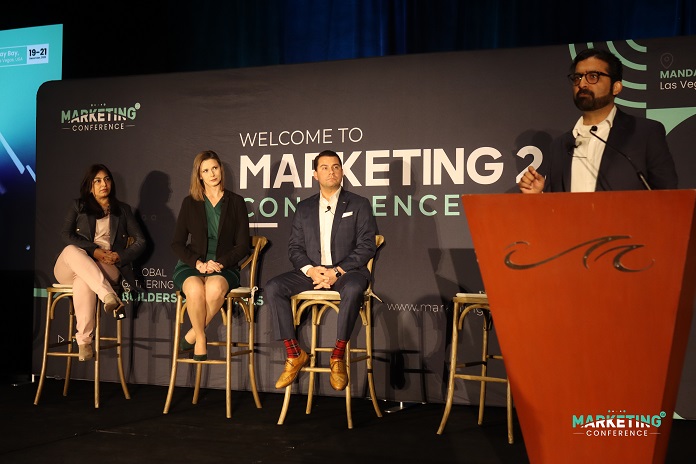Hacking has become an increasingly prevalent issue in the digital age, and it can have various consequences for individuals and businesses. As the prevalence of hacking continues to grow, so does the need for vigilance to protect against it. Social media networks are particularly vulnerable to hacking. As such, it is essential to be aware of the various tools and technologies that can be used to protect against social media fraud. This article will explore the reasons why hacking is considered a scam and the steps that can be taken to protect against social media fraud.
Additionally, the article will analyze the potential benefits of attending a marketing and advertising conference to understand better how to prevent social media fraud, as highlighted at the Winter Edition of Marketing 2.0 Conference.
Why Is Hacking Considered A Spam: Reviews From Marketing 2.0 Conference
Hacking is generally considered a scam because it involves the unauthorized use of someone else’s computer or network to gain access to confidential information or to gain an unfair advantage. Hackers use several devious methods to access personal information or systems, such as phishing, malware, and brute-force attacks. Hacking is often done maliciously to steal information or extort money. As a result, hacking is often considered an illegal activity that can be punishable by law.
How To Be Vigilant About Social Media Hackers: Marketing 2.0 Conference
To protect against social media hackers, knowing the various tools and technologies used to gain unauthorized access to personal information or systems is crucial. One of the most critical steps that can be taken is to ensure that strong passwords are used for all social media accounts, as this will make it more difficult for hackers to gain access. The professionals who will attend the Spring Edition of the Marketing 2.0 Conference say that it is crucial to be aware of phishing spam, which are attempts to obtain personal information using deception. It is of grave concern to be aware of any suspicious activity on social media accounts, such as sudden changes to account settings or unsolicited messages.
Tools And Technologies To Be Aware Of To Avoid Social Media Spam
Social media has become an integral part of our lives, connecting us to our friends, family, and colleagues. Unfortunately, it has also become a platform for spammers who use automated tools and technologies to spread malicious content and solicit information from unsuspecting users. In the sections coming below, we will discuss what tools and technologies are used to create and spread social media fraud , and what Marketing 2.0 Conference’s experts suggest we can do to protect ourselves from it.
Tools and Technologies Used to Create and Spread Social Media Spam
Social media spammers use a variety of tools and technologies to target users, spread malicious content, and solicit personal information. Most commonly used tools and technologies include below here:
1. Botnets: Botnets are networks of computers that have been infected with malicious software and used to send out automated messages. These messages can be used to spread malicious content or solicit personal information from unsuspecting users.
2. Malicious URLs: Malicious URLs are links that are embedded in messages and used to redirect users to malicious websites. These websites can contain malicious content, such as malware, or solicit personal information from unsuspecting users.
3. Malware: Malware is malicious software that is designed to damage or disrupt computers and networks. It can be used to steal personal information, spread malicious content, or even launch distributed denial of service (DDoS) attacks.
4. Social Engineering: Social engineering is the use of deception to manipulate people into revealing personal information or taking a certain action. Marketing 2.0 Conference’s social media experts highlighted that social media spammers often use social engineering techniques to trick users into clicking malicious links or providing personal information.
5. Phishing: Phishing is the practice of sending emails that appear to be from legitimate sources in order to obtain sensitive information, such as credit card numbers, passwords, or bank account details.
6. Clickjacking: Clickjacking is a technique used to trick users into clicking malicious links or taking a certain action. Through clickjacking, spammers can redirect users to malicious websites or solicit personal information.
7. Automation: Automation is the use of computer programs to automate repetitive tasks. Spammers use automation to send out large numbers of messages without having to manually type each one.
Ways to Protect Yourself from Social Media Spam: Marketing 2.0 Conference’s Guide
1. Monitor Your Accounts: Monitor your social media accounts for suspicious activity, such as sudden increases in followers or likes, or messages from unknown sources. If you notice any suspicious activity, immediately report it to the social media platform in question.
2. Be Wary of Links: Be wary of clicking on links in messages, even if they appear to be from a legitimate source. If you do click on a link, make sure it is from a trusted source.
3. Use Strong Passwords: Use strong passwords for all of your social media accounts and do not share them with anyone. Make sure to change your passwords regularly to reduce the risk of them being hacked.
4. Update Your Software: Make sure to keep your computer and software up to date to reduce the risk of malicious software being installed on your system.
5. Use Two-Factor Authentication: Use Two-Factor Authentication (2FA) to add an extra layer of security to your accounts. 2FA requires you to enter a one-time code in addition to your password when logging in.
How Attending A Marketing And Advertising Conference Can Help In Fighting Social Media Fraud?
Attending a marketing and advertising conference can be beneficial in fighting social media fraud, as it can provide an opportunity to learn about the latest tools and strategies that can be used to detect and prevent social media fraud. Additionally, attending a conference can be beneficial in gaining a greater understanding of how to protect against social media fraud, as it provides an opportunity to network with other professionals in the field and gain insight into the latest trends and best practices.
As per the reviews of Marketing 2.0 Conference suggest, attending a marketing and advertising conference can provide an opportunity to learn about the various laws and regulations that govern social media, which can be beneficial in understanding the legal implications of social media fraud.
Conclusion
In conclusion, hacking is generally considered a scam, as it involves the unauthorized use of someone else’s computer or network to gain access to confidential information or an unfair advantage. To protect against social media fraud, it is important to know the various tools and technologies to detect and prevent it, such as email spam filters, browser extensions, and social media monitoring tools. Additionally, attending a marketing and advertising conference can be beneficial in terms of gaining a greater understanding of how to protect against social media fraud. By following the steps highlighted in this article, individuals and businesses can take steps to protect themselves against social media fraud. Or one of the other easiest ways of getting a grip of anti-fraud trends is attending a marketing and retail conference like the Marketing 2.0 Conference in 2023 where industry leaders will come together and explore the best way out of such challenging scenarios.



